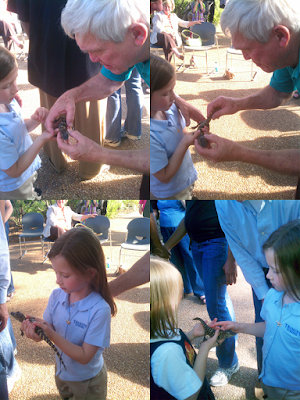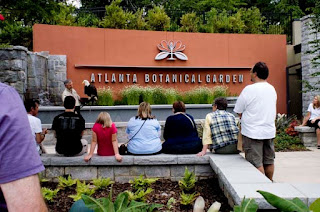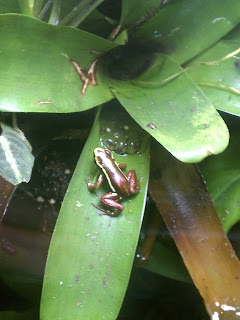Gopher frog tadpole nursery and exhibit

200 of the 1200 Gopher frog tadpoles in our nursery are now on exhibit in the Orchid Center.
In between our high and low elevation houses is our newest amphibian exhibit. Our ' Gopher frog nursery ' exhibit highlights the conservation work being done o n Georgia's rarest frog species . This 'head start' program is a collaborative effort between the Atlanta Botanical Garden, Jones Ecological Research Center, UGA, Zoo Atlanta, The Nature Conservancy and GA Department of Natural Resources ( see GA DNR site for more information )
In the background, you can see the breezeway in between the high and low elevation houses, where we are raising the Gopher frog tadpoles to metamorphosis.







